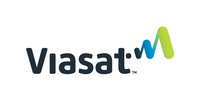Verizon has unveiled new updates to its hum smart vehicle technology, including boundary alerts, speed alerts, map-based vehicle location tracking, and driving history information. Hum’s new enhancements will available for download later this month on the Apple and GooglePlay marketplaces.
Gemalto, a digital security company, has launched its LinqUs IoT Quality of Service (QoS) offer, a comprehensive solution that enables mobile operators to monitor the cellular QoS of smart objects in real time.
LinqUs IoT Quality of Service provides instant network status and analysis, and immediately highlights any issue by ensuring data is readily available and accessible.
Gemalto said its LinqUs IoT Quality of Service is ideally suited to a wide range of use cases, including automotive, fleet management, smart grid, alarm panels and connected PoS applications.
LinqUs IoT Quality of Service can be deployed on the operator’s premises, or in the cloud for fully outsourced management by Gemalto. Real time data is gathered via IoT QoS clients embedded in the device. All the information gathered by LinqUs IoT QoS is available via tailored Advanced Analytics, Customer Service and Service Level Agreement measurement dashboards
Juniper Networks, a networking innovation company, and Affirmed Networks, a virtualized mobile network company, announced the formation of a technology partnership focused on the development of solutions that help service providers transition quickly and efficiently to a virtualized mobile architecture. The goal of the partnership’s virtualized mobile network reference architecture is to enable wireless service providers to deploy new services faster and at a lower cost than legacy solutions.
Ericsson and global operator Telefónica have signed a Memorandum of Understanding for the development of 5G technologies, products and services. The two companies will jointly support ongoing and new initiatives that will boost the development of 5G technologies and the entrepreneurial environment in which they can evolve, with specific focus on the 5G PPP and ETP Networld 2020 programs, promoted by the European Commission within the Horizon 2020 program.
This partnership has already begun, with one example in the recent creation of the first 5G laboratory of excellence by Telefónica (through its innovation unit, Telefónica I+D) and IMDEA Networks Institute in Spain. The laboratory, 5TONIC, is intended to create an open ecosystem for innovation and research. Ericsson is the first manufacturer to join the initiative as part of its 5G for Europe program.
Lattice Semiconductor Corporation, a provider of customizable smart connectivity solutions, announced availability of the company’s new baseband processor. The SB6541 is designed for use in conjunction with Lattice’s Sil6340 and SiI6342 RF transceivers to target fixed wireless access and wireless backhaul of urban broadband infrastructure such as LTE small cells and metro Wi-Fi access points.
When used in combination with the Lattice Sil6342 RF transceiver, the SB6541 supports Internet Protocol (IP) data rates of up to 2 Gbps, with a typical throughput of 1 Gbps at a range of up to 300 meters. The device integrates with the RF transceiver via high-speed analog I/O and a digital control interface.
Radisys Corporation, a services acceleration company, announced that Baicells has selected Radisys’ CellEngine TOTALeNodeB LTE small cell software to deliver LTE in unlicensed spectrum functionality for Baicells’ Light4G small cell solutions. China Mobile has completed field trials of Baicells’ solution and deployments are planned for later this year.
Filed Under: IoT • IIoT • Internet of things • Industry 4.0, Infrastructure




